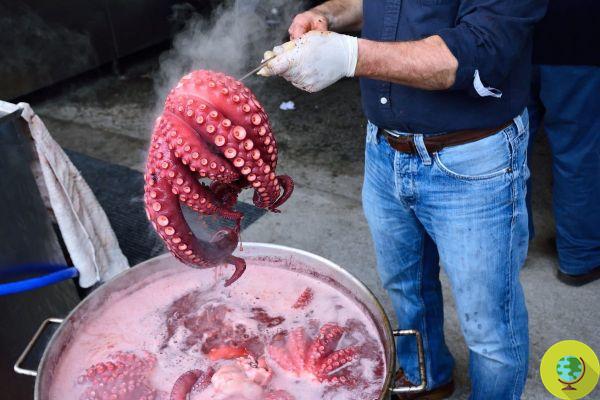
Lobsters suffer when immersed still alive in boiling water. It is not the animal rights activists who say it, but scientists Bob Elwood and Barry Magee of the Queen's School of Biological Sciences, who appeal to chefs and workers in the food and aquaculture industry: "should reconsider the way they treat shellfish. live, like crabs, shrimps and lobsters, ”reads a note.
He is about to end up run over, his mother saves him
Lobsters suffer when immersed still alive in boiling water. It is not the animal rights activists who say it, but scientists Bob Elwood and Barry Magee of the Queen's School of Biological Sciences, who appeal to chefs and workers in the food and aquaculture industry: "should reconsider the way they treat live crustaceans, like crabs, shrimps and lobsters, "reads a note.
Their study, published in the Journal of Experimental Sciences, is further evidence of previous investigations, which showed how shrimp and hermit crabs were able to distinguish between pleasant and painful sensations. The two biologists subjected the common crabs to small electric shocks, demonstrating how crustaceans tried to avoid pain.
“The experiment was carefully designed to distinguish between pain and a phenomenon known as nociceptive reflex. The function of pain is to help avoid the source of pain in the future, while nociception is an automatic response that provides immediate protection, but no long-term awareness or behavioral changes, ”says Professor Elwood.
Precisely on this point the scientific community has long debated. While it is agreed that nociception exists in nearly all animals, the same is not true of the ability to feel pain. In particular, it is about the experience of crustacean pain that the debate has always been heated. But now this study shows that they too are capable of avoid electric shock, peven giving up their instinct to hide in the dark crevices of the rocks, where the researchers subjected them to the little shock. “Ninety crabs were introduced each individually in a tank with two dark shelters - continues the biologist-. After they had chosen their favorite refuge between the two, some of the crabs were exposed to an electric shock “.
They were later moved and reintroduced into the tank three times: most never returned to the refuge they had originally chosen. Individuals who had not received the shock, on the other hand, continued to use their favorite refuge. "After experiencing two rounds of shaking, the crabs have learned to avoid the refuge where they received them. They were willing to give up their refuge in order to avoid the source of their pain, "Elwood explains, noting that the search for him requires a examination of how crustaceans are used in the food industries.
“Billions of crustaceans are caught or raised in aquaculture for the food industry. Unlike mammals, crustaceans they have no protection, assuming they can't feel pain. Our research suggests otherwise. Therefore, - concludes the professor - greater consideration of the treatment of these animals is necessary “. Animal rights activists don't say that. This time the scientists say so. The real question now is: was it really necessary to commission a study to establish that a live boiled animal could suffer?
Fonti: ScienceDaily / Journal of Experimental Sciences
READ also:
- Considering the lobster: a video investigation denounces the mistreatment
- Order aragosta 80 years old at the restaurant just to free her


























